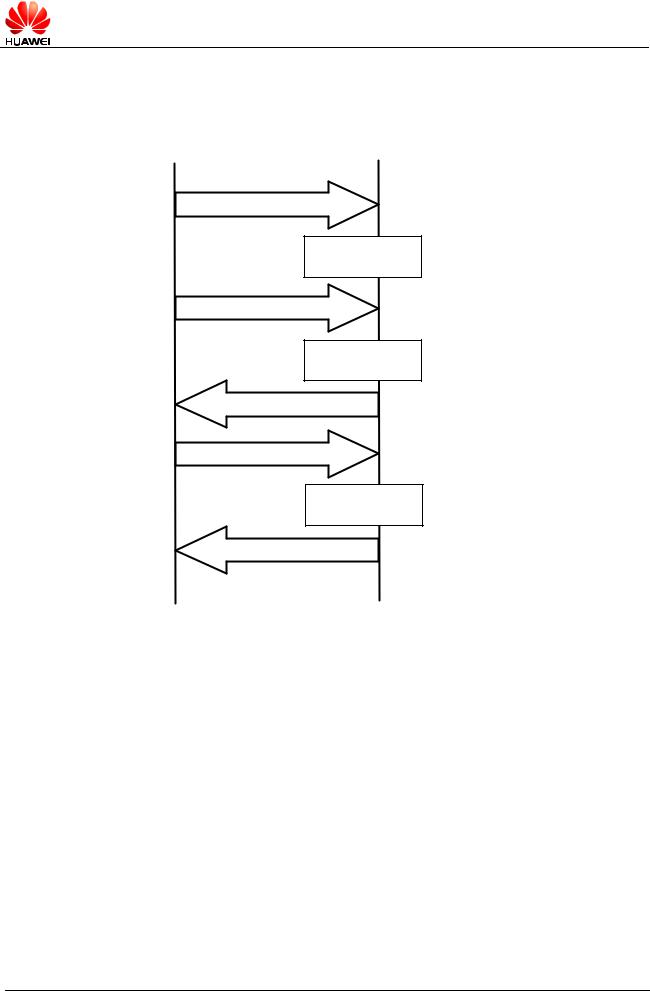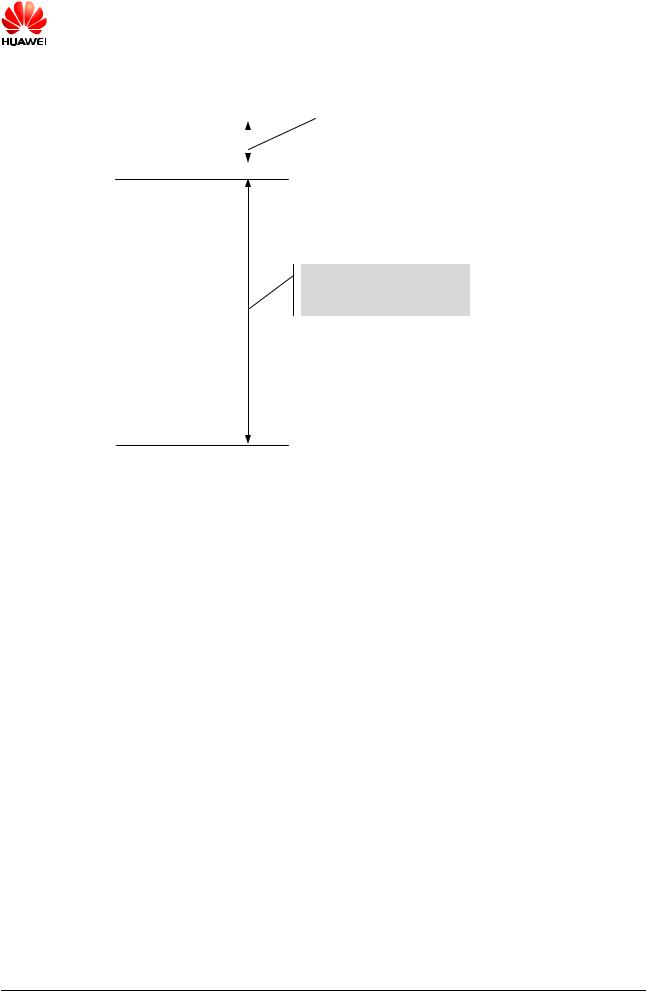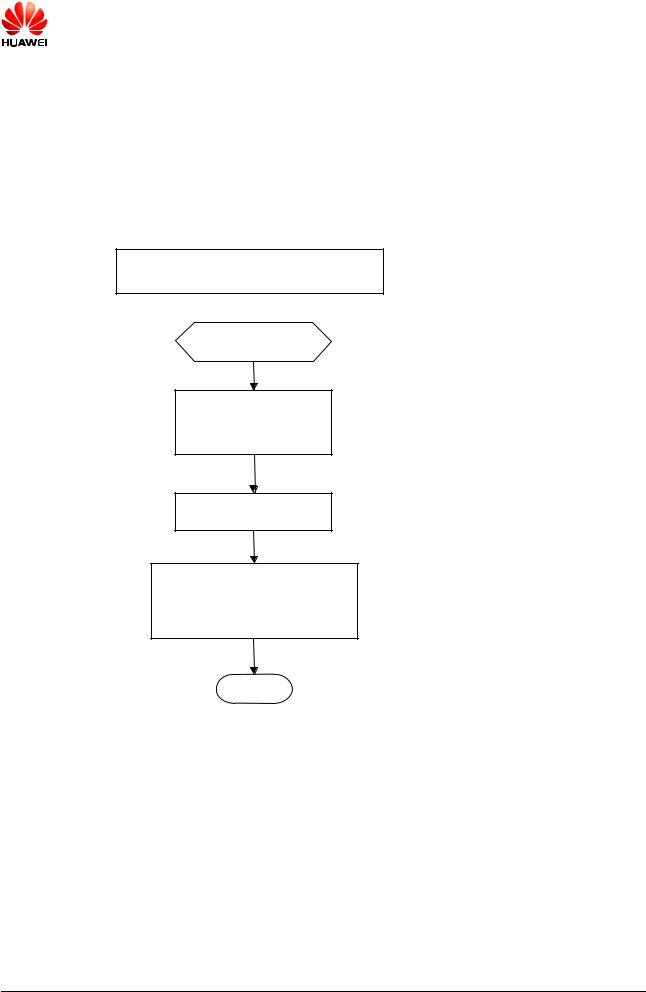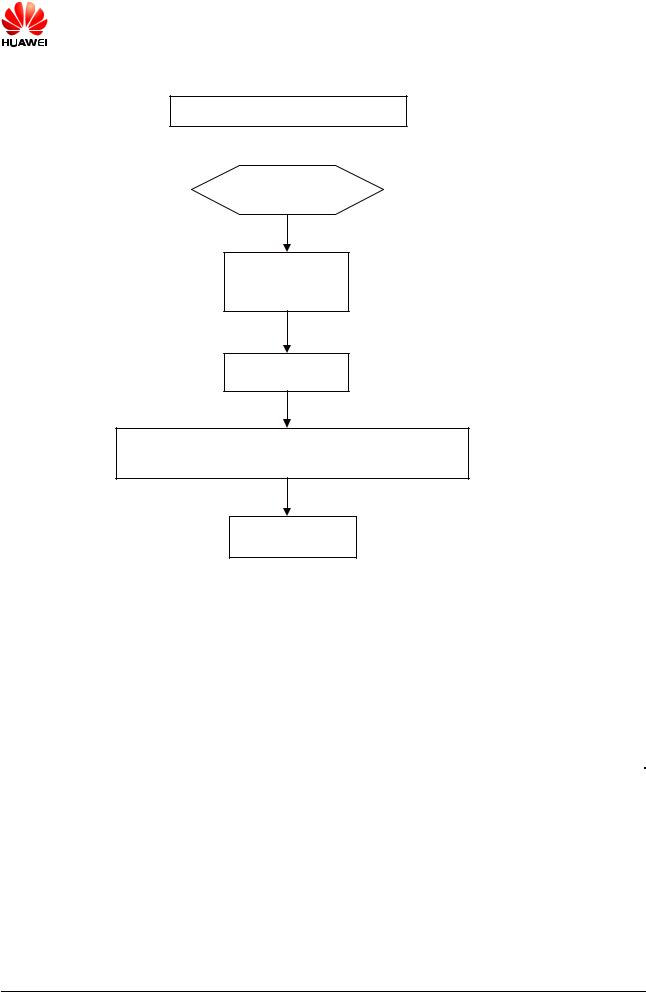Huawei ME909u-521 User Manual

HUAWEI ME909u-521 LTE LGA Module
Application Guide
Issue 01
Date 2013-07-05

Huawei Technologies Co., Ltd. provides customers with comprehensive technical support and service. For any assistance, please contact our local office or company headquarters.
Huawei Technologies Co., Ltd.
Huawei Industrial Base, Bantian, Longgang, Shenzhen 518129, People’s Republic of China Tel: +86-755-28780808 Global Hotline: +86-755-28560808 Website: www.huawei.com E-mail: mobile@huawei.com
Please refer color and shape to product. Huawei reserves the right to make changes or improvements to any of the products without prior notice.
Copyright © Huawei Technologies Co., Ltd. 2013. All rights reserved.
No part of this document may be reproduced or transmitted in any form or by any means without prior written consent of Huawei Technologies Co., Ltd.
The product described in this manual may include copyrighted software of Huawei Technologies Co., Ltd and possible licensors. Customers shall not in any manner reproduce, distribute, modify, decompile, disassemble, decrypt, extract, reverse engineer, lease, assign, or sublicense the said software, unless such restrictions are prohibited by applicable laws or such actions are approved by respective copyright holders under licenses.
Trademarks and Permissions
 ,
, 

 , and
, and  are trademarks or registered trademarks of Huawei Technologies Co., Ltd.
are trademarks or registered trademarks of Huawei Technologies Co., Ltd.
Other trademarks, product, service and company names mentioned are the property of their respective owners.
Notice
Some features of the product and its accessories described herein rely on the software installed, capacities and settings of local network, and may not be activated or may be limited by local network operators or network service providers, thus the descriptions herein may not exactly match the product or its accessories you purchase.
Huawei Technologies Co., Ltd reserves the right to change or modify any information or specifications contained in this manual without prior notice or obligation.
NO WARRANTY
THE CONTENTS OF THIS MANUAL ARE PROVIDED "AS IS". EXCEPT AS REQUIRED BY APPLICABLE LAWS, NO WARRANTIES OF ANY KIND, EITHER EXPRESS OR IMPLIED, INCLUDING BUT NOT LIMITED TO, THE IMPLIED WARRANTIES OF MERCHANTABILITY AND FITNESS FOR A PARTICULAR PURPOSE, ARE MADE IN RELATION TO THE ACCURACY, RELIABILITY OR CONTENTS OF THIS MANUAL.
TO THE MAXIMUM EXTENT PERMITTED BY APPLICABLE LAW, IN NO CASE SHALL HUAWEI TECHNOLOGIES CO., LTD BE LIABLE FOR ANY SPECIAL, INCIDENTAL, INDIRECT, OR CONSEQUENTIAL DAMAGES, OR LOST PROFITS, BUSINESS, REVENUE, DATA, GOODWILL OR ANTICIPATED SAVINGS.
Import and Export Regulations
Customers shall comply with all applicable export or import laws and regulations and will obtain all necessary governmental permits and licenses in order to export, re-export or import the product mentioned in this manual including the software and technical data therein.

HUAWEI ME909u-521 LTE LGA Module |
|
Application Guide |
About This Document |
About This Document
Revision History
|
Document |
|
Date |
Chapter |
Description |
|
Version |
|
|
|
|
|
|
|
|
|
|
|
|
|
|
|
|
01 |
|
2013-07-05 |
|
Creation |
|
|
|
|
|
|
|
Issue 01 (2013-07-05) |
Huawei Proprietary and Confidential |
3 |
|
Copyright © Huawei Technologies Co., Ltd. |
|||
|
|

HUAWEI ME909u-521 LTE LGA Module |
|
Application Guide |
Contents |
Contents
1 Overview......................................................................................................................................... |
|
|
7 |
|
1.1 |
Conventions and Definitions |
............................................................................................................ |
7 |
|
|
1.1.1 Conventions............................................................................................................................. |
|
|
7 |
|
1.1.2 Definitions ................................................................................................................................ |
|
|
7 |
1.2 |
Organization of This Document........................................................................................................ |
8 |
||
1.3 |
Basic AT Command Processing ......................................................................................Principles |
9 |
||
|
1.3.1 Ports ........................................................................................................................................ |
|
|
9 |
|
1.3.2 AT Command Processing .....................................................................................Mechanism |
9 |
||
|
1.3.3 Recommended Timeout .....................Mechanism for AT Commands Processed by a Host |
12 |
||
2 Initialization Application Scenarios ....................................................................................... |
14 |
|||
2.1 |
Startup Indication ^SYSSTART ...................................................................................................... |
14 |
||
|
2.1.1 Reference Process ................................................................................................................ |
|
|
14 |
|
2.1.2 Troubleshooting ..................................................................................................................... |
|
|
14 |
2.2 |
Querying Basic Information ............................................................................................................ |
|
15 |
|
|
2.2.1 Reference Process ................................................................................................................ |
|
|
15 |
|
2.2.2 Troubleshooting ..................................................................................................................... |
|
|
15 |
2.3 |
Network Service Operations .......................................................................................................... |
|
16 |
|
|
2.3.1 Reference Process ................................................................................................................ |
|
|
16 |
|
2.3.2 Troubleshooting ..................................................................................................................... |
|
|
17 |
3 Network Searching and Registration .............................................Application Scenarios |
18 |
|||
3.1 |
Searching and Registering Network............................................................................................... |
18 |
||
|
3.1.1 Reference Process ................................................................................................................ |
|
|
18 |
|
3.1.2 Troubleshooting ..................................................................................................................... |
|
|
20 |
4 ECM Application Scenarios |
...................................................................................................... |
|
21 |
|
4.1 |
ECM Dialing ................................................................................................................................... |
|
|
21 |
|
4.1.1 Reference Process ................................................................................................................ |
|
|
21 |
|
4.1.2 Troubleshooting ..................................................................................................................... |
|
|
22 |
4.2 |
Querying the Dial-up Connection ..........................................................................................State |
22 |
||
|
4.2.1 Reference Process ................................................................................................................ |
|
|
22 |
|
4.2.2 Troubleshooting ..................................................................................................................... |
|
|
23 |
4.3 |
Disconnecting the Dial-up Connection ........................................................................................... |
23 |
||
|
4.3.1 Reference Process ................................................................................................................ |
|
|
23 |
|
|
|
Huawei Proprietary and Confidential |
|
Issue 01 (2013-07-05) |
|
|
4 |
|
|
|
Copyright © Huawei Technologies Co., Ltd. |
|
|

|
HUAWEI ME909u-521 LTE LGA Module |
|
|
|
Application Guide |
|
Contents |
|
4.3.2 Troubleshooting ..................................................................................................................... |
|
23 |
5 SMS Application Scenarios |
...................................................................................................... |
24 |
|
5.1 |
Overview ........................................................................................................................................ |
|
24 |
5.2 |
Initializing SMS............................................................................................................................... |
|
26 |
|
5.2.1 Reference Process ................................................................................................................ |
|
26 |
|
5.2.2 Troubleshooting ..................................................................................................................... |
|
29 |
5.3 |
Sending Short Message ................................................................................................................. |
|
29 |
|
5.3.1 Reference Process ................................................................................................................ |
|
29 |
|
5.3.2 Troubleshooting ..................................................................................................................... |
|
31 |
5.4 |
Reading Short Messages |
............................................................................................................... |
32 |
|
5.4.1 Reference Process ................................................................................................................ |
|
32 |
|
5.4.2 Troubleshooting ..................................................................................................................... |
|
34 |
5.5 |
Deleting Short Messages |
............................................................................................................... |
34 |
|
5.5.1 Reference Process ................................................................................................................ |
|
34 |
|
5.5.2 Troubleshooting ..................................................................................................................... |
|
35 |
6 Phonebook Application Scenarios .......................................................................................... |
36 |
||
6.1 |
Overview ........................................................................................................................................ |
|
36 |
6.2 |
Memory Operations........................................................................................................................ |
|
36 |
|
6.2.1 Reference Process ................................................................................................................ |
|
36 |
|
6.2.2 Troubleshooting ..................................................................................................................... |
|
37 |
6.3 |
Reading Phonebook Entries .......................................................................................................... |
38 |
|
|
6.3.1 Reference Process ................................................................................................................ |
|
38 |
|
6.3.2 Troubleshooting ..................................................................................................................... |
|
39 |
|
6.3.3 Writing/Deleting Phonebook Entries...................................................................................... |
40 |
|
|
6.3.4 Reference Process ................................................................................................................ |
|
40 |
|
6.3.5 Troubleshooting ..................................................................................................................... |
|
41 |
6.4 |
Searching for Phonebook Entries .................................................................................................. |
42 |
|
|
6.4.1 Reference Process ................................................................................................................ |
|
42 |
|
6.4.2 Troubleshooting ..................................................................................................................... |
|
43 |
6.5 |
Querying User Number .................................................................................................................. |
|
43 |
|
6.5.1 Reference Process ................................................................................................................ |
|
43 |
|
6.5.2 Troubleshooting ..................................................................................................................... |
|
44 |
6.6 |
Setting the TE's Character Sets ..................................................................................................... |
44 |
|
|
6.6.1 Reference Process ................................................................................................................ |
|
44 |
|
6.6.2 Troubleshooting ..................................................................................................................... |
|
45 |
7 SIM Operation Application Scenarios.................................................................................... |
46 |
||
7.1 |
PIN Operations............................................................................................................................... |
|
46 |
|
7.1.1 Reference Process ................................................................................................................ |
|
46 |
|
7.1.2 Troubleshooting ..................................................................................................................... |
|
47 |
7.2 CRSM Command ........................................................................................................................... |
|
48 |
|
|
7.2.1 Reference Process ................................................................................................................ |
|
48 |
|
|
Huawei Proprietary and Confidential |
|
Issue 01 (2013-07-05) |
|
5 |
|
|
|
Copyright © Huawei Technologies Co., Ltd. |
|

HUAWEI ME909u-521 LTE LGA Module |
|
Application Guide |
Contents |
7.2.2 Troubleshooting ..................................................................................................................... |
50 |
8 Sleeping and Waking Up Application Scenarios ................................................................. |
51 |
8.1 Hardware Interfaces ....................................................................................................................... |
52 |
8.2 Sequence Diagram......................................................................................................................... |
53 |
8.3 Software Interfaces ........................................................................................................................ |
54 |
8.3.1 Principle ................................................................................................................................. |
54 |
8.3.2 USB and Sleep ...................................................................................................................... |
56 |
8.3.3 UART and Sleep.................................................................................................................... |
57 |
8.3.4 Module Wake-up.................................................................................................................... |
57 |
8.3.5 Host Woken up by Module .................................................................................................... |
57 |
8.4 Application Scenarios: System with USB Connection only ............................................................ |
59 |
8.4.1 Hardware Connection............................................................................................................ |
59 |
8.4.2 Software Procedure ............................................................................................................... |
59 |
8.4.3 Advantages ............................................................................................................................ |
60 |
8.5 Application Scenarios: System with USB and WAKEUP_OUT...................................................... |
60 |
8.5.1 Hardware Connection............................................................................................................ |
60 |
8.5.2 Software Procedure ............................................................................................................... |
60 |
8.5.3 Advantages ............................................................................................................................ |
61 |
8.6 System with Other Connection Methods........................................................................................ |
61 |
9 Thermal Protection Application Scenarios ............................................................................ |
62 |
9.1 Pre-configuration ............................................................................................................................ |
62 |
9.1.1 Troubleshooting ..................................................................................................................... |
62 |
9.2 Thermal Protection Process ........................................................................................................... |
62 |
10 Module Powering Off and Resetting Application Scenarios........................................... |
64 |
10.1 Restarting the ME......................................................................................................................... |
64 |
10.1.1 Reference Process .............................................................................................................. |
64 |
10.1.2 Troubleshooting ................................................................................................................... |
64 |
10.2 Power Off ME ............................................................................................................................... |
64 |
10.2.1 Reference Process .............................................................................................................. |
64 |
10.2.2 Troubleshooting ................................................................................................................... |
65 |
11 Appendix .................................................................................................................................... |
66 |
11.1 Relative Documents ..................................................................................................................... |
66 |
11.2 Acronyms and Abbreviations ........................................................................................................ |
66 |
Issue 01 (2013-07-05) |
Huawei Proprietary and Confidential |
6 |
|
Copyright © Huawei Technologies Co., Ltd. |
|||
|
|

HUAWEI ME909u-521 LTE LGA Module |
|
Application Guide |
Overview |
1 Overview
This document is intended to provide references for customers to choose appropriate command sequences to start using the ME909u-521 module in a faster manner. This document also contains examples and relevant description.
This document will be updated based on customers' requirements.
1.1 Conventions and Definitions
1.1.1 Conventions
Convention |
Description |
|
|
<…> |
Value range of AT command parameters |
|
|
XXXX |
Personal Identification Number (PIN), Personal Unlock Key |
|
(PUK), or password |
|
|
1.1.2 Definitions
Term |
Definition |
|
|
Connected |
Indicates that a link has been set up between two |
|
modules or a module and a terminal. |
|
|
Registered |
Indicates that the module is registered with a |
|
LTE/UMTS/GSM network. |
|
|
Module |
HUAWEI LTE module |
|
|
Issue 01 (2013-07-05) |
Huawei Proprietary and Confidential |
7 |
|
Copyright © Huawei Technologies Co., Ltd. |
|||
|
|

HUAWEI ME909u-521 LTE LGA Module |
|
Application Guide |
Overview |
Application |
Mobile equipment |
|
|
|
network |
1.2 Organization of This Document
Chapter |
Description |
|
|
Chapter 1 Overview |
Describes the contents and organization of this |
|
document |
|
|
Chapter 2 Initialization |
Describes scenarios for initialization |
Application Scenarios |
|
|
|
Chapter 3 Network Searching |
Describes scenarios for network searching and |
and Registration Application |
registration |
Scenarios |
|
|
|
Chapter 4 ECM Application |
Describes scenarios for ECM |
Scenarios |
|
|
|
Chapter 5 SMS Application |
Describes scenarios for the text message |
Scenarios |
|
|
|
Chapter 6 Phonebook |
Describes scenarios for phonebook |
Application Scenarios |
|
|
|
Chapter 7 SIM Operation |
Describes scenarios for PIN management |
Application Scenarios |
|
|
|
Chapter 8 Sleeping and Waking |
Describes scenarios for power management |
Up Application Scenarios |
|
|
|
Chapter 9 Thermal Protection |
Describes scenarios for thermal protection |
Application Scenarios |
|
|
|
Chapter 10 Module Powering Off |
Describes scenarios for powering off and |
and Resetting Application |
restarting |
Scenarios |
|
|
|
Chapter11 Appendix |
Appendix |
|
|
Issue 01 (2013-07-05) |
Huawei Proprietary and Confidential |
8 |
|
Copyright © Huawei Technologies Co., Ltd. |
|||
|
|

HUAWEI ME909u-521 LTE LGA Module |
|
Application Guide |
Overview |
1.3 Basic AT Command Processing Principles
1.3.1 Ports
The ME909u-521 module provides three ports to interact with its host:
MODEM port: simulated using USB, for AT command interaction and establishing data connection.
Port name: HUAWEI Mobile Connect-3G Modem
PCUI port: simulated using USB, for AT command interaction only. Port name: HUAWEI Mobile Connect-3G PCUI Interface
ECM port: simulated using USB, for establishing communication connection. Port name: CDC Ethernet Control Model (ECM)
The ME909u-521 also provides a port for debugging:
DIAG port: Simulated using USB, for DIAG (diagnostic) command interaction (mainly used to debug modules at present).
Port name: HUAWEI Mobile Connect-3G Application Interface
A host controls a module using AT commands. If AT commands are unavailable, a module can be deemed as unavailable.
1.3.2 AT Command Processing Mechanism
A module processes AT commands from the ports (MODEM, PCUI) in series. An AT command can be processed when and only when the previous AT command processing has been completed. If the module is processing an AT command, a new AT command from the same port will be ignored and other commands from other ports will be buffered until the current AT command is processed.
This rule also applies to COM ports converted from USB ports.
The processing of an AT command starts when the AT command is entered from the TE, and ends when the UE (the module) returns all the results in response the command.
Issue 01 (2013-07-05) |
Huawei Proprietary and Confidential |
9 |
|
Copyright © Huawei Technologies Co., Ltd. |
|||
|
|

HUAWEI ME909u-521 LTE LGA Module |
|
Application Guide |
Overview |
Figure 1-1 AT command processing sequence diagram
TE |
|
UE |
|
|
|
AT command 1
Process AT command 1
AT command 2
Ignore AT command 2
Return results of AT command 1
AT command 3
Process AT command 3
Return results of AT command 3
Issue 01 (2013-07-05) |
Huawei Proprietary and Confidential |
10 |
|
Copyright © Huawei Technologies Co., Ltd. |
|||
|
|

HUAWEI ME909u-521 LTE LGA Module |
|
|
|
|
|||||
Application Guide |
|
|
|
Overview |
|||||
Example: |
|
|
|
|
|||||
|
AT +CPIN ? |
|
|
|
|
||||
|
|
|
All AT commands entered during |
|
|||||
|
+CPIN : READY |
|
|
|
|
this period of time will be |
|
||
|
|
|
|
|
|||||
|
|
|
|
|
|
|
|
ignored. |
|
|
OK |
|
|
|
|
|
|||
|
AT +CMGL =4 |
|
|
|
|
||||
|
+CMGL : 0,3,,19 |
|
|
|
|
||||
|
07813108608805 F911320 B813109730116 F20000 A705B3D84C4603 |
||||||||
|
+CMGL : 1,2,,18 |
|
|
|
|
||||
|
07813108608805 F931FF0B813109730155 F30000 A704F4F29C0E |
||||||||
|
+CMGL : 2,2,,18 |
|
|
|
|
||||
|
07813108608805 F931FF0B813109730155 |
|
|
F30000 A704F4F29C0E |
|
||||
|
+CMGL : 3,2,,28 |
|
All AT commands entered |
|
|||||
|
07813108608805 F931FF0B813109730155 |
duringF30000this periodA71061 ofF69CACtime will2EBF 69B5FA 4 |
|||||||
|
D36CBC 168 |
|
be ignored. |
||||||
+CMGL : 4,2,,24
07813108608805 F931FF0B813109730155 F30000 A70BB 05C2D5DB 7C1D4ECB 4
1A
+CMGL : 5,2,,22
07813108608805 F931FF0B813109730155 F30000 A7096 E333 B8DCBE 77079 +CMGL : 6,2,,22
07813108608805 F931FF0B813109730155 F30000 A70930598 D26A 7DBDF 68
OK
Some special AT commands can be aborted by new AT commands. Such special commands are called abortive commands.
The ME909u-521 supports the following abortive AT commands:
The AT+COPS Set command
AT+CLCK
Issue 01 (2013-07-05) |
Huawei Proprietary and Confidential |
11 |
|
Copyright © Huawei Technologies Co., Ltd. |
|||
|
|

HUAWEI ME909u-521 LTE LGA Module |
|
Application Guide |
Overview |
Example:
AT+COPS=1,2,23415
OK
Before the results ofAT+COPS is returned, enter any characters (such as "AT"), the module will terminate the processing of AT+COPS and return OK. The entered characters are used to abort the command only .
Some commands can be executed when SIM card is inserted. It would return to SIM failure if SIM card is not inserted. For more information, see Property Description of related AT in
Example:
AT+CREG?
+CME ERROR: SIM failure
Note:
SIM failure indicate that SIM card is not inserted.
1.3.3 Recommended Timeout Mechanism for AT Commands
Processed by a Host
A module processes AT commands in series. Do not send another AT command before the result for the current command is returned or the current command times out (except when the current command is an abortive AT command). The following table lists AT command timeout durations (starting from the time when an AT command arrives at a port).
Table 1-1 AT command timeout duration
AT Command |
Timeout Duration |
|
|
General AT commands |
30s |
|
|
AT+CMSS/AT+CMGS (used to send text |
60s |
messages) |
|
|
|
AT+COPS=? (used to search for networks) |
120s |
|
|
After an AT command times out, it is recommended that the host check whether the module is functioning normally. The following procedure is provided for your reference:
1.The host sends AT to the module.
Issue 01 (2013-07-05) |
Huawei Proprietary and Confidential |
12 |
|
Copyright © Huawei Technologies Co., Ltd. |
|||
|
|

HUAWEI ME909u-521 LTE LGA Module |
|
Application Guide |
Overview |
2.If the module returns failure information, go to step 5.
3.If the module returns success information, the module is functioning normally.
4.If the host times out (the host waits for a response for over 30 seconds) three times when waiting for the response from the module, go to step 5. Otherwise go to step 1.
5.The host deems that the current module does not exist or is unavailable. Close the port, stop sending all AT commands, exit the procedure to determine whether the module is normal, and re-search for modules.
Issue 01 (2013-07-05) |
Huawei Proprietary and Confidential |
13 |
|
Copyright © Huawei Technologies Co., Ltd. |
|||
|
|

HUAWEI ME909u-521 LTE LGA Module |
|
Application Guide |
Initialization Application Scenarios |
2 Initialization Application Scenarios
2.1 Startup Indication ^SYSSTART
2.1.1 Reference Process
Command |
Description |
|
|
|
|
|
A module, without solicitation, presents ^SYSSTART to |
|
|
its host to indicate that the module is starting. |
|
|
|
|
|
|
|
^SYSSTART |
Indicate that a module is starting. |
|
|
|
|
Notes:
^SYSSTART is presented only when a module is starting and will not be presented after a module has started.
^SYSSTART is presented only after the radio frequency (RF) initialization completes and will not be presented in offline mode.
2.1.2Troubleshooting
|
Scenario |
|
|
Possible Error |
|
|
Solution |
|
|
|
|
|
|
||||
|
|
|
Information |
|
|
|
||
|
|
|
|
|
|
|
|
|
|
|
|
|
|
|
|
|
|
|
The module presents |
|
Indicate that the |
|
|
If ^SYSSTART is presented |
||
|
^SYSSTART during startup. |
|
|
|
||||
|
|
module has been |
|
|
repeatedly, send the module |
|||
|
After that, the module |
|
|
|
||||
|
|
reset. |
|
|
to the specified repair center. |
|||
|
presents ^SYSSTART again. |
|
|
|
||||
|
|
|
|
|
|
|
||
|
|
|
|
|
|
|
|
|
Issue 01 (2013-07-05) |
Huawei Proprietary and Confidential |
14 |
|
Copyright © Huawei Technologies Co., Ltd. |
|||
|
|

HUAWEI ME909u-521 LTE LGA Module |
|
Application Guide |
Initialization Application Scenarios |
2.2 Querying Basic Information
2.2.1 Reference Process
Command |
Description |
|
|
AT+GMR/CGMR |
Query software version. |
|
|
Software version |
Software version. e.g. 11.103.03.00.00 |
OK |
|
|
|
AT+GMI/CGMI |
Query manufacturer identification. |
|
|
Manufacturer |
For example: Huawei Technologies Co., Ltd. |
Identification |
|
OK |
|
|
|
AT+GMM/CGMM |
Query model identification. |
|
|
Model identification |
For example: ME909u-521 |
OK |
|
|
|
AT+GSN/CGSN |
Query product IMEI. |
|
|
IMEI |
For example: 865261010004010 |
OK
Note:
The previously listed commands are Query commands and cannot be used to configure settings.
2.2.2 Troubleshooting
|
Scenario |
|
|
Possible Error |
|
|
Solution |
|
|
|
|
|
|
||||
|
|
|
Information |
|
|
|
||
|
|
|
|
|
|
|
|
|
|
|
|
|
|
|
|
|
|
|
|
|
|
|
|
|
This error occurs when a |
|
|
|
|
|
+CME ERROR: memory |
|
|
module's IMEI is not specified. |
|
|
AT+GSN/CGSN |
|
|
|
This problem is solved after |
|||
|
|
failure |
|
|
||||
|
|
|
|
|
|
the IMEI is written into the |
||
|
|
|
|
|
|
|
||
|
|
|
|
|
|
|
module. |
|
|
|
|
|
|
|
|
|
|
Issue 01 (2013-07-05) |
Huawei Proprietary and Confidential |
15 |
|
Copyright © Huawei Technologies Co., Ltd. |
|||
|
|

HUAWEI ME909u-521 LTE LGA Module |
|
Application Guide |
Initialization Application Scenarios |
2.3 Network Service Operations
2.3.1 Reference Process
Command |
|
Description |
|
|
|
|
|
AT+CFUN? |
|
Query a module's current mode. 1 indicates online |
|
|
|
mode. |
|
|
|
||
|
|
|
|
+CFUN: 1 |
|
|
|
OK |
|
|
|
|
|
|
|
AT+CPIN? |
|
Query whether a module's SIM card is password |
|
|
|
protected. READY indicates that the SIM card is |
|
|
|
|
|
|
|
ready. |
|
|
|
|
|
+CPIN: READY |
|
|
|
OK |
|
|
|
|
|
|
|
AT^HCSQ? |
|
Query the network signal quality. |
|
|
|
|
|
^HCSQ: |
|
|
|
"WCDMA",30,30,58 |
|
|
|
OK |
|
|
|
|
|
|
|
AT+COPS? |
|
Return the current network selection mode, |
|
|
|
information about the operator with which the |
|
|
|
|
|
|
|
module is registered, and the wireless access |
|
|
|
standard. |
|
|
|
|
|
+COPS: "Network status For example: +COPS: 1,0, "China Mobile Com" information"
OK |
|
|
|
AT+COPS=0 |
Automatically search for networks. |
|
|
OK |
|
|
|
AT+CREG? |
Query the state of the currently registered network. |
|
|
+CREG: 0,1 |
|
OK |
|
|
|
AT+CREG=1 |
Set the +CREG unsolicited indication. |
|
|
OK |
|
|
|
Issue 01 (2013-07-05) |
Huawei Proprietary and Confidential |
16 |
|
Copyright © Huawei Technologies Co., Ltd. |
|||
|
|

HUAWEI ME909u-521 LTE LGA Module |
|
Application Guide |
Initialization Application Scenarios |
2.3.2 Troubleshooting
|
Scenario |
|
|
Possible Error Information |
|
|
Solution |
|
|
|
|
|
|
|
|
|
|
|
AT+COPS? |
|
|
+CME ERROR: SIM failure |
|
|
No SIM card is detected. Insert |
|
|
|
|
|
|
a SIM card. |
|
||
|
|
|
|
|
|
|
|
|
|
|
|
|
|
|
|
|
|
|
AT+CREG? |
|
|
+CME ERROR: SIM failure |
|
|
No SIM card is detected. Insert |
|
|
|
|
|
|
a SIM card. |
|
||
|
|
|
|
|
|
|
|
|
|
|
|
|
|
|
|
|
|
Issue 01 (2013-07-05) |
Huawei Proprietary and Confidential |
17 |
|
Copyright © Huawei Technologies Co., Ltd. |
|||
|
|

HUAWEI ME909u-521 LTE LGA Module |
Network Searching and Registration Application |
Application Guide |
Scenarios |
3 Network Searching and Registration
Application Scenarios
3.1 Searching and Registering Network
3.1.1 Reference Process
|
Command |
|
Description |
|
|
|
|
|
|
|
|
|
AT+COPS=0 |
|
Enable automatic search for networks. |
|
|
|
|
|
|
|
|
|
OK |
|
|
|
|
|
|
|
|
|
|
|
AT+COPS=1,2,"46000" |
Manual search for the appointed network. |
|
|
|
|
|
|
|
|
|
|
OK |
|
|
|
|
|
|
|
|
|
|
|
AT+COPS=? |
|
Search for all networks, and return the |
|
|
|
|
|
networks. |
|
|
|
|
|
|
|
|
|
|
|
|
|
|
|
OK |
|
|
|
|
|
|
|
|
|
|
|
AT+CREG=2 |
|
Enable the unsolicited indication when |
|
|
|
|
|
network registration state changes. |
|
|
|
|
|
|
|
|
|
|
|
|
|
|
|
OK |
|
|
|
|
|
|
|
|||
|
AT^SYSCFGEX="00",3FFFFFFF |
Set the system mode, network access order, |
|
||
|
,1,2,7FFFFFFFFFFFFFFF,, |
frequency band, roaming support, domain, |
|
|
|
|
|
|
and other features. |
|
|
|
|
|
|
|
|
|
|
|
|
|
|
|
OK |
|
|
|
|
|
|
|
|
|
|
|
AT^SYSINFOEX |
Query the system service state, domain, |
|
|
|
|
|
|
roaming status, and system mode. |
|
|
|
|
|
|
|
|
|
|
|
|
|
|
|
^SYSINFOEX: |
|
|
|
|
|
2,3,0,1,,1,"GSM",3,"EDGE" |
|
|
|
|
|
OK |
|
|
|
|
|
|
|
|
|
|
|
AT^HCSQ? |
|
Query the signal quality. |
|
|
|
|
|
|
|
|
|
|
|
|
|
|
Issue 01 (2013-07-05) |
Huawei Proprietary and Confidential |
18 |
|
||
Copyright © Huawei Technologies Co., Ltd. |
|
||||
|
|
|
|
||

HUAWEI ME909u-521 LTE LGA Module |
Network Searching and Registration Application |
|
Application Guide |
Scenarios |
|
|
|
|
|
Command |
Description |
|
|
|
|
^HCSQ:"GSM",73 |
|
|
OK |
|
|
|
|
Figure 3-1 Automatic search for networks
Automatic search for networks
Start
Enable automatic search for networks. AT+COPS=0
Return OK
The unsolication command ^SRVST indication for
the change of network state.
End
Issue 01 (2013-07-05) |
Huawei Proprietary and Confidential |
19 |
|
Copyright © Huawei Technologies Co., Ltd. |
|||
|
|

HUAWEI ME909u-521 LTE LGA Module |
Network Searching and Registration Application |
Application Guide |
Scenarios |
Figure 3-2 Manual search for networks
Manual search for networks
Start
Enable automatic search for networks. AT+COPS=?
Display the networks found.
Select and register with a network.
AT+COPS=1[,<format>[,<oper>[,<rat>]]]
End
3.1.2 Troubleshooting
|
Scenario |
|
|
Possible Error |
|
|
Solution |
|
|
|
|
|
|
||||
|
|
|
Information |
|
|
|
||
|
|
|
|
|
|
|
|
|
|
|
|
|
|
|
|
|
|
|
AT+COPS? |
|
+CME ERROR: SIM |
|
|
No SIM card is detected. Insert |
||
|
|
failure |
|
|
a SIM card. |
|||
|
|
|
|
|
|
|||
|
|
|
|
|
|
|
|
|
|
AT+CREG? |
|
+CME ERROR: SIM |
|
|
No SIM card is detected. Insert |
||
|
|
failure |
|
|
a SIM card. |
|||
|
|
|
|
|
|
|||
|
|
|
|
|
|
|
|
|
Issue 01 (2013-07-05) |
Huawei Proprietary and Confidential |
20 |
|
Copyright © Huawei Technologies Co., Ltd. |
|||
|
|

HUAWEI ME909u-521 LTE LGA Module |
|
Application Guide |
ECM Application Scenarios |
4 ECM Application Scenarios
4.1 ECM Dialing
4.1.1 Reference Process
Command |
Description |
|
|
AT^NDISDUP=? |
Check the parameter range supported by |
|
the command. |
|
|
^NDISDUP: (1-16),(0-1) |
|
OK |
|
|
|
AT^NDISDUP=1,1,"1234" |
Set up a dial-up connection using the |
|
APN provided by the network server. |
|
|
OK |
The command is successfully executed. |
^NDISSTAT: 1,,,"IPV4" |
Report the dial-up connection state. |
|
|
AT^NDISDUP=1,1,"4321","huawei", |
Set up a dial-up connection using the |
"huawei",1 |
account, password, and authentication |
|
mode provided by the network server. |
|
|
OK |
The command is successfully executed. |
^NDISSTAT: 1,,,"IPV4" |
Report the dial-up connection state. |
|
|
The process of obtaining the IP address:
1.After the dial-up is successful, the module will establish the DHCP service automatically.
2.The PC driver will get the dial-up state and send net_ready state to the network manage.
3.The network manage sends the DHCP service discover.
Issue 01 (2013-07-05) |
Huawei Proprietary and Confidential |
21 |
|
Copyright © Huawei Technologies Co., Ltd. |
|||
|
|
